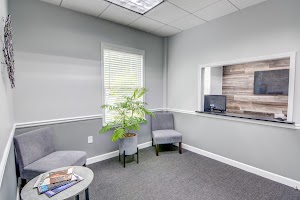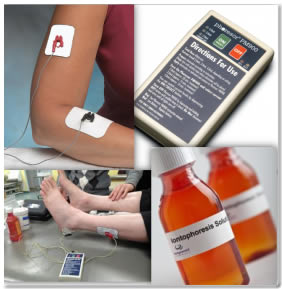Call Us: 770-232-7100
1810 Peachtree Industrial Blvd, Suite 130, Duluth GA, 30097
Therapeutic Dynamics Modalities
We include in our therapeutic dynamics modalities ultrasound, iontophoresis and electrical stimulation among others to assist in the progression of the patient’s rehabilitation.
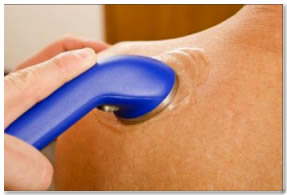
Therapeutic Ultrasound is a method of stimulating tissue beneath the skin’s surface, using sound waves. It is sort of a very high frequency sound massage, which can penetrate up to 4 inches below the surface of your skin. 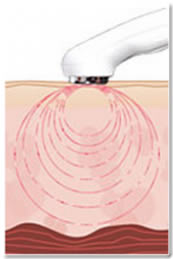 The sound waves are very high frequency, typically between 800,000 Hz and 2,000,000 Hz. This sound cannot be heard by humans or animals. Humans can only hear sounds up to about 20,000 Hz. This very high frequency sound, like medicine, affects very small molecules and cells in the body and actually causes them to vibrate. Through a process called vasodilation, the stimulation created by the ultrasound unit will cause your body to pump oxygen and nutrient rich blood to the treated area. This supply of fresh blood means a higher rate of healing, reduced swelling, and faster recovery from injuries.
The sound waves are very high frequency, typically between 800,000 Hz and 2,000,000 Hz. This sound cannot be heard by humans or animals. Humans can only hear sounds up to about 20,000 Hz. This very high frequency sound, like medicine, affects very small molecules and cells in the body and actually causes them to vibrate. Through a process called vasodilation, the stimulation created by the ultrasound unit will cause your body to pump oxygen and nutrient rich blood to the treated area. This supply of fresh blood means a higher rate of healing, reduced swelling, and faster recovery from injuries.
![]()
Neuromuscular Re-education
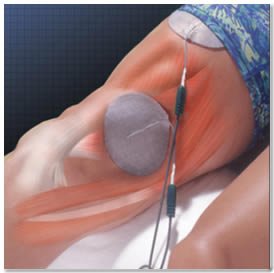 Neuromuscular Electrical Nerve Stimulation (NMES) is the application of an electrical stimulus for muscle rehabilitation. During NMES, an electrical stimulus is passed from the device to an electrode placed on the skin over a targeted muscle or muscle group mimicking the central nervous system causing the muscles to contract as they would naturally. The impulses are generated by a device such as a NMES unit and delivered through electrodes on the skin. These electrodes are placed on the muscle that needs stimulation.
Neuromuscular Electrical Nerve Stimulation (NMES) is the application of an electrical stimulus for muscle rehabilitation. During NMES, an electrical stimulus is passed from the device to an electrode placed on the skin over a targeted muscle or muscle group mimicking the central nervous system causing the muscles to contract as they would naturally. The impulses are generated by a device such as a NMES unit and delivered through electrodes on the skin. These electrodes are placed on the muscle that needs stimulation.
Physical therapy with NMES machines is effective in preventing muscle atrophy due to disuse of a muscle or muscle groups. It is used primarily after musculoskeletal injuries such as damage to ligaments, tendons, joints, muscles, and bones. Though they look similar, it differs from TENS units. Transcutaneous electrical nerve stimulation machines use an electric current for pain therapy rather than muscle stimulation. Patients with a wide range of orthopedic and neurologic diagnoses can benefit from the use of NMES.
![]()
Electrical Stimulation
Electrical stimulation uses an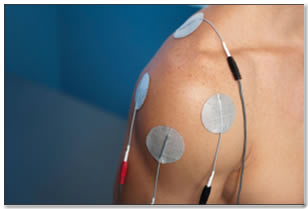 electrical current to cause a single
electrical current to cause a single
muscle or a group of muscles to contract. By placing electrodes on the skin in various locations the physical therapist can recruit the appropriate muscle fibers. Contracting the muscle via electrical stimulation helps strengthen the affected muscle. The physical therapist can change the current setting to allow for a forceful or gentle muscle contraction. Along with increasing muscle strength, the contraction of the muscle also promotes blood supply to the area that assists in healing.
Also Known As: E Stim
![]()
Dexamethasone Iontophoresis
Iontophoresis is a technique of introducing ionic medicinal compounds (Dexamethasone) into the body through the skin by applying a local electric current. It is a safe, well-documented method of increasing penetration of molecules into surface tissues. Iontophoresis uses locally applied direct current to deliver medications across skin. Certain 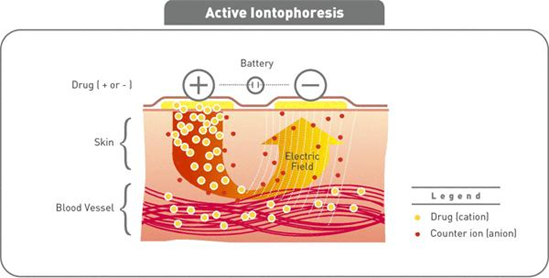 scientific principles describe iontophoresis as a way to passively diffuse medication into the skin. The basic principle used is that electrical energy assists the movement of ions across the stratum corneum according to the basic electrical principle “like charges repel each other and opposite charges attract each other”.
scientific principles describe iontophoresis as a way to passively diffuse medication into the skin. The basic principle used is that electrical energy assists the movement of ions across the stratum corneum according to the basic electrical principle “like charges repel each other and opposite charges attract each other”.
![]()
Lumbar/Cervical Traction
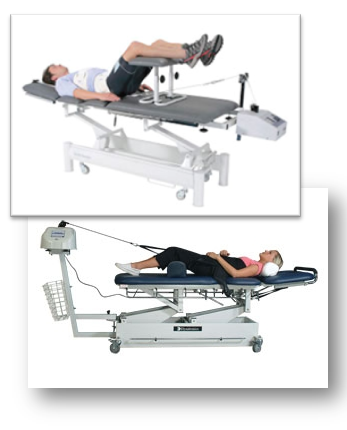
Mechanical spinal traction is the use of mechanical devices that exert a pulling force through a rope and various halters and straps. The tractive force results in a longitudinal separation and gliding apart of cervical (neck) or lumbar (back) spinal segments
The main purpose of mechanical traction is to reduce symptoms of cervical (neck) or lumbar (back) spinal compression. This is accomplished by allowing increased space for spinal nerves, elongating muscle tissue, decreasing sensitivity and muscle guarding, decreasing intradiscal pressure and increasing blood supply to the disc. Decreasing the pressure of the disc may help retract the disc bulges.
Mechanical spinal traction may be appropriate as part of a treatment plan for spinal nerve impingement (also known as “pinched nerve”) due to the following problems: Degenerative Disc Diseases, Spinal Stenosis,Generalized Hypomobility and Muscle Spasm.
Mechanical spinal traction may help you if you are experiencing numbness, tingling, pain in your upper/lower extremities or neck/back pain and muscle spasms. If you are experiencing these symptoms consult your doctor for a physical therapy evaluation to see if spinal mechanical traction is right for you.
Curious About Our Proven Modalities for Pain Relief?
Call Us Now and Book Your Personalized Physical Therapy Consultation!
See What Our Clients Are Saying…
